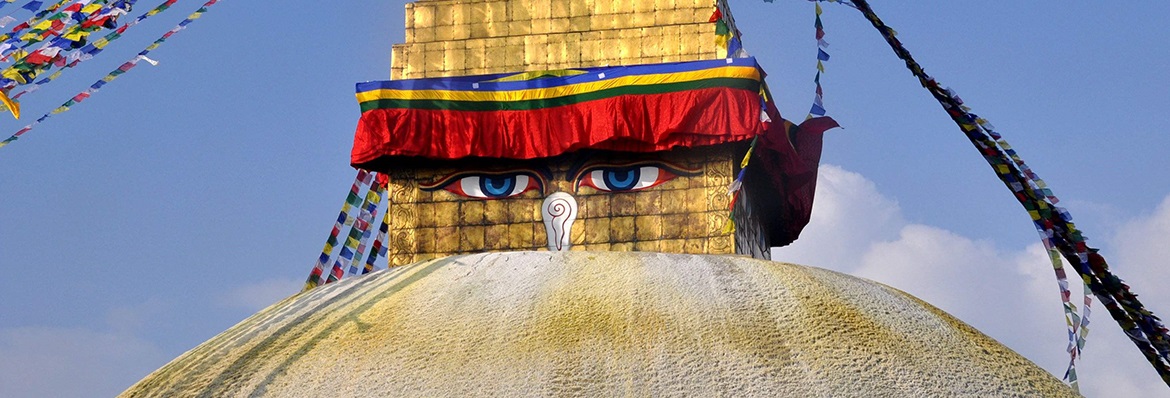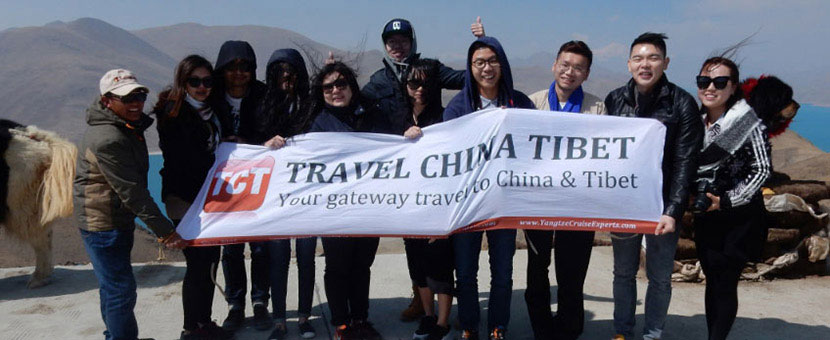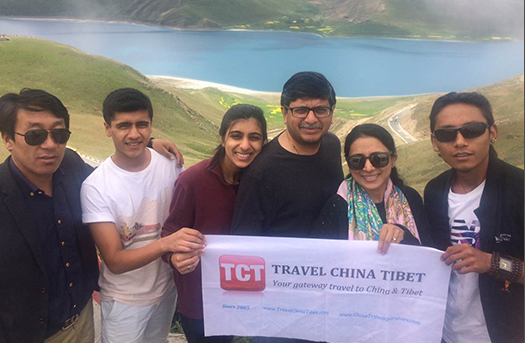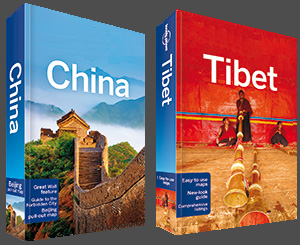Kathmandu Overview
Kathmandu (also known as KTM) – the capital of Nepal, is the first place that you will step in when you enter this nation by air. Tribhuvan International Airport (TIA) is the only international airport in Nepal and it happens to be located in Kathmandu. So, your journey in Nepal begins in this city filled with temples. It is also referred as "The City of Temples" because the place is filled with pagoda style temples which mostly dates back to 16th and 17th century.
Kathmandu is the name of the bowl shaped valley and it also happens to be the name of one of the cities located in this valley. The name of the valley is "Kathmandu Valley" and the name of the city is Kathmandu city. It is also referred as KTM city or just KTM. In Newari, it is called Yẽ or Yẽ Deya. Some old names of it are Kantipur or Kasthamandap Mahanagar. The name of other sister cities located inside this valley are Lalitpur also known as Patan, Bhaktapur also known as Khwopa, Kirtipur and Madhyapur Thimi. Together these cities form the largest urban settlement of Nepal housing the highest number of people.
When you land in Kathmandu, don't let the population, traffic, and pollution scare you off to another city. You've landed in one of the densest valley in the world and if you come from a quiet place, you might never get accustomed to the noise. Since you've landed here already, make the most of your time. There's a lot to see here before you move on to other cities like Pokhara and Lumbini or before starting your trek into the great Himalayas.
What to see in Kathmandu
For most people visiting Nepal, Kathmandu will be the first city that they will step on. It is the gateway to Nepal and the Himalayas. This classical valley is where east meets west. You will see the rapid urbanization and historical culture crossing paths at the same place. At the first sight, the infrastructure and population might not be that pretty to the eye, but hidden within those are places which are worth visiting. The most famous ones are listed above, but obviously there are more places.
It doesn't even take a long time to explore this tiny valley. Give it a few days and you finish visiting the most exciting parts. Notice how the valley transitions from a fresh morning to a busy day finally settling into a lovely evening followed by a quiet night.
After the valley, you can head on to other places like Pokhara, Chitwan, Lumbini, Janakpur, Langtang and Lukla etc. Try to finish the cultural tour before you visit places that offer trekking and adventure sports. This way you will make the most out of your visit to Nepal.
If you have visited Kathmandu, do let us know your experiences. Contact us as we are always happy to hear your experiences. You can also leave your comments below for everyone to see.

When you're in Kathmandu, don't forget:
To check out religous complexes and ancient courtyards filled with temples and shrines.
The year round festivities and the cuisine that comes with them.
Tasting the local food that include Pahari, Thakali, Newari, and other popular cuisines.
Exploring the tiny alleys that is surrounded by houses of classical design.
To visit the old markets where you'll find items being sold that are quite unique.
Museums that potray items of historical importance to the nation.
Experiencing the city at different times of the day. Mornings and evenings are way better.
Hiking to the hills in the outskirts of the valley.
Night life with live music in bars, clubs and restaurants.
Take a sip of local drinks and beverages.
To shop for items that you need for your next destination in Nepal.
To always keep exploring for more.
Shopping in Kathmandu
What Kathmandu lacks in international-style boutiques, it makes up for in excellent, locally produced handicrafts. Centuries-old crafts like repoussé metalworking and lost-wax casting are just the normal way of doing things in Kathmandu, and craftsmen toil in every backstreet, hammering intricate designs into cookpots, temple bells and Buddhist singing bowls. The best place to see artisans at work is the warren of narrow alleyways surrounding the great stupa at Bodhnath.
Markets : In the Old Town, the market between Asan Tol and Indra Chowk sells spices, dried fruit, incense, brass pots, block-printed fabrics and traditional Nepali clothes. In fact, the entire old town is one continuous bazaar, and almost anything can be found along the atmospheric alleyways between Thamel and Durbar Square.
Shopping centres: Saturday is the official day off in Nepal, but shops that cater to tourists generally stay open seven days a week. Note that all the shops may close if a bandh (strike) is called.
Key areas : Stores selling imported luxury items, including cameras and electronics, are concentrated in the shops along New Road and Khicha Pokhari, close to Durbar Square. Shops selling brand-name clothes and gems are scattered along on Durbar Marg and Tridevi Marg in Thamel. The district of Thamel is a continuous arcade of shops selling clothes, pashminas, jewellery, antiques and Nepali crafts. A more upmarket place to shop for handicrafts is the swish Bahar Mahal Revisited Complex, housed in Rana-era palace near the Singh Durbar government offices in the southeast of the city. Craft emporiums run by local charities are spread out along Kopundol, the road linking Kathmandu and Patan.
Souvenirs : Kathmandu has more prayer flag stores than shopping malls, so it’s no great surprise that traditional crafts are the top buys in the city. Almost anything can be found in the lanes of Thamel, but popular items include brassware, woodcarvings, silver and turquoise jewellery, pashmina shawls, singing bowls, khukuri knives, handmade paper, ceramics, wood and papier mâché masks, Nepali tea, thangkas (traditional Tibetan Buddhist cloth paintings) and hand-knotted woollen carpets, best purchased from the Tibetan refugee showrooms in Jawalakhel. Thamel is also packed with stores selling gear for trekking and mountaineering, though much of the merchandise is counterfeit, with low-quality stitching and dubious insulating properties. To find the real deal, stick to the upscale stores on Durbar Marg or Tridevi Marg, or seek out superior-quality reproductions at Shona’s in Jyatha. Resist the urge to buy every piece of trekking equipment on display – wise trekkers just carry what is needed, and plenty of treks can be completed in comfortable trainers without an ice-axe or four-season sleeping bag. Camera equipment is a surprise bargain in Kathmandu, with numerous stores along New Road selling the latest cameras and lenses from Nikon and Canon. Again the golden rule is don’t carry more than you need – a heavy telephoto lens can make the difference between a leisurely trek and an uphill struggle.
Shopping hours : Saturday is the official day off in Nepal, but shops that cater to tourists generally stay open seven days a week.
Tax information: There are no tax-free shopping options for travellers, but prices for imported cameras in particular are similar to duty-free prices elsewhere.
Travel Advice for Kathmandu
Political tensions in Nepal remain high. There are frequent bandhs (shutdowns), rallies and demonstrations, which can be violent and cause widespread disruption. If you are travelling in Nepal, you should remain vigilant, avoid demonstrations, and stay in close touch with your tour operator.
Bars and restaurants are now required to close at 2300 as part of a Government crackdown on illegal activities. This means that after this time the streets around the city are poorly lit and relatively few people are about.
There is an underlying threat from terrorism. Attacks could be indiscriminate, including in places frequented by expatriates and foreign travelers.
Since January 2007 there has been civil unrest and violence in the Terai district. Riots and roadblocks in the Terai severely disrupted transport and prevented supplies reaching the rest of the country. Tensions remain high between rival political groups and occasional clashes have broken out. In March 2007, at least 28 Maoists were killed during a clash with the Madhesis People's Rights Forum (MJF) cadres in Gaur, central Terai. The security situation in general throughout the Terai appears to be steadily deteriorating.
The Government of Nepal has announced that elections will be held on 10 April 2008. Related bandhs (shutdowns), rallies and demonstrations are likely to take place in the run-up. These events can cause widespread disruption and can be called at short notice. Transport can be severely disrupted, roads and major highways could be blocked. Travellers are advised to avoid all demonstrations and large gatherings and remain vigilant at all times. In January 2008, demonstrations, related to an increase in fuel prices, turned violent.
This advice is based on information provided by the Foreign and Commonwealth Office in the UK. It is correct at time of publishing. As the situation can change rapidly, visitors are advised to contact the www.TravelChinaTibet for the latest travel advice:
What to eat in Kathmandu, Kathmandu dinning & restaurants
Nepal is quite popular for its cuisine too and it shows in the increasing number of eateries in every nooks and corners of Kathmandu Valley. Nepal has every kind of restaurants to satisfy the taste buds and palate of different types of people. You can find Thai, Mexican, Indian, Japanese, Korean, Italian, Chinese, Continental hangouts at par with the fast food joints, pubs to local restaurants which will serve you its authentic and sumptuous Nepali, Newari or Thakali food. Most of the listed restaurants on this site are foreign managed and “Hygiene” always comes first in these places. The phone numbers are made available for your easy reference.
How to get to Kathmandu, Getting around Kathmandu
Getting There By Air
Tribhuvan International Airport
Tel: (01) 447 3779 or 0311.
Nepal’s international airport is located around 5km (3 miles) east of the city centre. Flights run from Kathmandu to India, Bhutan, Bangladesh, Pakistan, China, Thailand, Singapore, Malaysia, South Korea and the Persian Gulf. Most flights to Europe involve a change in the Middle East. Transport to the city centre: For a fixed price taxi ride to the centre, book your trip at the Airport Queue Taxi Service desk; you will receive a coupon to present to the driver. Buses run from just outside the airport to central Kathmandu, Ratna Park and the Old Bus Park but there is little space for luggage and routes are confusing.
Getting There By Road
Nepal is connected by road to India and Tibet in China but few people attempt to enter Nepal with their own vehicles. The most popular way is to take a 7 days overland tour from Tibet to Nepal (www.TravelChinaTibet.com), there are both group tour and private tour available for this route.
Public Transport in Kathmandu
Kathmandu has an extensive public transport network, but routes can be confusing and signboards are generally marked in Nepali rather than English. Most visitors prefer to visit the sights on foot or by rented bicycle or taxi. The public bus system in Kathmandu is very cheap but incredibly crowded and destinations and route numbers are generally marked in Nepali characters. Most bus routes start at the Old Bus Park on the eastern side of the Tundikhel Parade Ground. Buses operate from approximately 0530 to 2100 but there is no fixed timetable, and buses will stop anywhere on the route when passengers want to board or disembark. The old, polluting two-stroke tempos (auto rickshaws) were banned by the government but environmentally friendly electric tempos operate on fixed routes for a fixed price. Pedal rickshaws provide an atmospheric way to explore the streets of the Old Town, but always agree a fare before departing. A tip is much appreciated for good service, usually around 10% of the fare.
Taxis in Kathmandu
Taxis are easy to recognize as they have a taxi sign and black number plates. All taxis are metered, but drivers are often reluctant to use the meter – if this happens, negotiate a fixed fare with the driver before you set off. Taxis can be flagged down anywhere in the city, and a moving taxi is more likely to charge a fair price than the parked taxis which loiter around the tourist sights and popular hotels. During the evening rush hour, it may be impossible to find a driver anywhere who is willing to use the meter.
Bicycle Hire in Kathmandu
Numerous agencies in Thamel rent out bicycles, but the traffic and pollution can make cycling in Kathmandu a testing experience. Motorcycles can be rented from numerous Thamel agencies, particularly around Thahity Tole, but the condition of the bikes varies widely. Foreign riders require an International Driving Permit or a license from home endorsed for motorcycle riding, though few companies enforce this requirement. However, if you ride without the proper paperwork, you run the risk of being stung for fines and/or bribes by traffic police. Most rental agencies ask riders to leave a large cash deposit or a passport.
Driving in Kathmandu
Driving in Kathmandu is a chaotic experience; few people obey traffic rules and most drivers prefer to use the horn rather than the brakes. If you rent a motorcycle, follow the example of locals when it comes to parking. In areas with designated motorcycle parking, attendants will collect a small fee. Do not leave your motorcycle on the street at night – most hotels will bring your bike into the lobby when they close the shutters for the night. Do not drive in Kathmandu during a bandh (strike) – roads are blocked and vehicles are often targeted for vandalism.
Weather & Climate in Kathmandu
The Kathmandu Valley is a warm, temperate zone which has a mild climate most of the year, and the city of Kathmandu, situated at an altitude of 4,297 feet (1,310m), has a mild, subtropical climate. Summer temperatures, between May and August, range from 67°F to 81°F (19°C to 27°C), and in winter, between November and February, temperatures average between 36°F and 68°F (2°C to 20°C). During the rainy monsoon season between June and August, there is an average rainfall of between 7.8 to 14.7 inches (20 to 37cm) in Kathmandu. May and June can be very hot and humid until the monsoon rains bring relief. In spring (March to April) and autumn (October to November) the temperatures are pleasant with occasional short bursts of rain, while November to February are dry, but can be very cold, especially at night.
The best months to visit Kathmandu for a holiday are October to November and March to April, when the weather is warm and largely sunny, and the air is crisp and clear. Winters (November to February) are exceedingly cold, while early summer (May and June) is swelteringly hot and humid. The best time to visit is also partly determined by desired activities.
Kathmandu, Nepal is at 27°42'N, 85°22'E, 1337 m (4386 ft).
Kathmandu has a humid subtropical hot summer climate that is mild with dry winters, hot humid summers and moderate seasonality
According to the Holdridge life zones system of bioclimatic classification Kathmandu is situated in or near the subtropical wet forest biome.
The mean temperature is 18.3 degrees Celsius (64.9 degrees Fahrenheit).
Average monthly temperatures vary by 14.5 °C (26.1°F). This indicates that the continentality type is oceanic, subtype truly oceanic.
In the winter time records indicate temperatures by day reach 19.7°C (67.4°F) on average falling to 2°C (35.6°F) overnight.
In spring time temperatures climb reaching 27.3°C (81.2°F) generally in the afternoon with overnight lows of 11°C (51.8°F).
During summer average high temperatures are 28.3°C (83°F) and average low temperatures are 19.3°C (66.8°F).
Come autumn/ fall temperatures decrease achieving average highs of 26°C (78.8°F) during the day and lows of 12.3°C (54.2°F) generally shortly after sunrise.
Total annual Precipitation averages 1343 mm (52.9 inches) which is equivalent to 1343 Litres/m² (32.94 Gallons/ft²).
On average there are 2556 hours of sunshine per year. Visit the sunshine and daylight section to check monthly details including how high in the sky the sun reaches each month.











